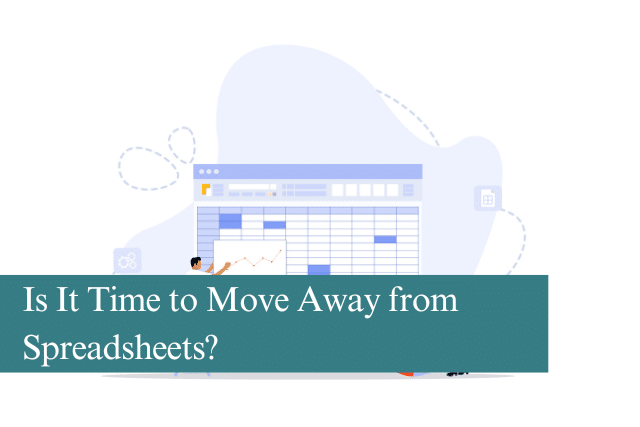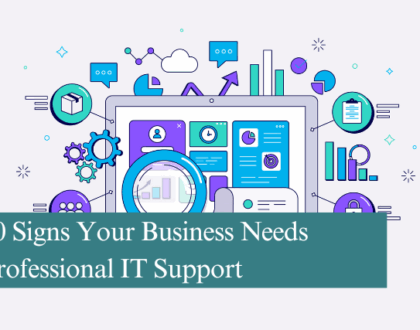
Spreadsheets have been the backbone of business operations for decades. From tracking expenses to managing customer data, they’ve been the go-to tool for businesses of all sizes. But as organisations evolve and technology advances, many companies are asking an important question: are spreadsheets still the right tool for the job?
We regularly meet businesses that rely heavily on Excel or Google Sheets to manage critical operations. While spreadsheets have their strengths, there comes a point where they may be holding you back rather than helping you move forward.
In this post, we’ll explore the advantages and limitations of spreadsheets, and help you decide whether it’s time for your business to move beyond them.
Why Spreadsheets Have Been So Popular
Before we criticise spreadsheets, it’s worth recognising why they’ve stood the test of time.
- Accessibility – Almost everyone has used a spreadsheet at some point. The learning curve is low, and you don’t need specialist training to get started.
- Flexibility – Spreadsheets can be adapted for countless tasks: budgets, schedules, stock lists, forecasts, and more.
- Low Cost – Microsoft Excel is often bundled with Office licences, while Google Sheets is free. That makes spreadsheets an easy default for many businesses.
- Quick to Implement – Need a solution tomorrow? A spreadsheet can be built in minutes.
These qualities make spreadsheets a fantastic short-term solution. But what about the long term?
The Problems with Spreadsheets
While spreadsheets are convenient, they come with challenges that can seriously affect business growth.
Human Error
Studies show that almost 90% of spreadsheets contain mistakes. It only takes one misplaced formula, a copy-paste error, or a missed zero to cause a major financial miscalculation. For small businesses, such errors can be costly; for larger companies, they can be catastrophic.
Lack of Collaboration
Spreadsheets weren’t designed for multiple people to edit at once. While cloud-based tools like Google Sheets have improved collaboration, version control issues still arise. Teams often end up working on different files, leading to duplication and confusion.
Limited Scalability
Spreadsheets struggle as data volumes grow. Once you’re handling thousands of rows or complex formulas, performance drops. More importantly, spreadsheets weren’t designed to manage large datasets or act as reliable databases.
Security Concerns
Many businesses store sensitive information in spreadsheets, often emailed between staff or saved in shared drives. This creates security risks, especially if data isn’t encrypted or properly access-controlled.
Poor Integration
Modern businesses rely on a wide range of software: CRMs, accounting systems, project management tools, marketing platforms, and more. Spreadsheets don’t integrate well with these systems, often leading to manual data entry another source of inefficiency and error.
Signs It’s Time to Move On
So, how do you know if your business has outgrown spreadsheets? Here are some key indicators:
- You’re spending more time fixing spreadsheet errors than using the data.
- Your team is struggling to collaborate effectively on the same documents.
- You need real-time data updates across multiple systems.
- Security and compliance are becoming business priorities.
- Your processes feel “held together” with spreadsheets rather than streamlined.
If any of these sound familiar, it may be time to explore alternatives.
What Are the Alternatives?
Fortunately, there are many modern solutions that can replace or complement spreadsheets.
- Cloud Databases – Tools like Airtable or Microsoft Dataverse provide easy-to-use database functionality with far fewer risks of errors and better scalability.
- Business Intelligence (BI) Platforms – Solutions such as Power BI or Tableau allow you to visualise and analyse data in real-time, connecting directly to your systems.
- Enterprise Resource Planning (ERP) Systems – For manufacturers, retailers, and service providers, ERP systems centralise operations (inventory, HR, finance, sales) into one platform.
- Industry-Specific Software – From construction management platforms to healthcare scheduling systems, many industries now have software tailored to their needs.
These tools don’t just replace spreadsheets – they transform how businesses operate, offering automation, better collaboration, and deeper insights.
Making the Transition
Moving away from spreadsheets doesn’t happen overnight. It requires careful planning, training, and change management. Here are some steps to make the transition smoother:
- Identify Critical Processes – Start with the areas where spreadsheets cause the most pain: finance, sales, inventory, or reporting.
- Choose the Right Solution – Work with IT experts to evaluate which systems align with your needs and budget.
- Pilot and Scale – Roll out the new system to a small team first, then expand gradually.
- Train Staff – People often resist change because they don’t feel confident using new tools. Proper training is essential.
- Integrate, Don’t Eliminate – Sometimes, spreadsheets still have a place for quick tasks. The goal is to reduce reliance, not ban them altogether.
Conclusion
At Mansys, we help businesses transition from spreadsheets to tailored IT systems that improve accuracy, security and collaboration. If you’re ready to explore what’s possible, our team in Bradford would be happy to guide you through the options. Contact us today.
Recommended Posts

5 Signs Your Bradford Business Needs a Managed IT Partner
15th August 2025

5 Common IT Mistakes Businesses Make (and How to Avoid Them)
8th August 2025

10 Signs Your Business Needs Professional IT Support
1st August 2025
